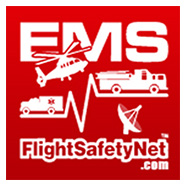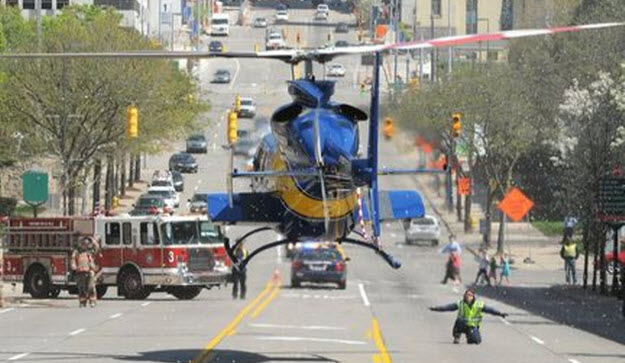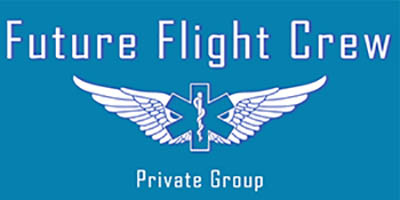— An easy checklist for EMS helicopter pilots, firefighters and landing zone coordinators.
EMS Helicopter pilots love…
the path of least resistance.
And I admit it.
I love it too.
Why make things hard, when easy is so much… easier.
That’s what this article is about.
An easy checklist for EMS helicopter pilots and helicopter landing zone coordinators to follow. I used this checklist for the last 10 years I flew civilian EMS. It’s simple, it works and it’s easy to remember.
I hope it helps you.
Here is the S.W.O.R.D. Checklist for EMS Helicopter Landing Zones:
[images style=”3″ image=”http%3A%2F%2Fflightsafetynet.com%2Fwp-content%2Fuploads%2F2010%2F08%2FS.W.O.R.D.jpg” width=”233″ align=”center” top_margin=”0″ full_width=”Y”]
S – Size, Surface, Slope.
Size matters when it comes to landing zones, and in all cases, bigger is better.
Surface – what type? Grass, asphalt, loose gravel, snow, pasture, corn field, etc
Slope – how much? 2 – 3 degrees, 3 – 5 degrees, 5 – 10 degrees, and in what direction? East to West, North to south, etc
W – Winds
Always report direction winds are “coming from” or “out of” and estimated speed.
Example: Winds are out of the North at 10 knots or Winds are 360 degrees at 10 knots.
O – Obstacles
Report all obstacles inside the landing area cones or flares as well as any obstacles within two miles of the landing zone.
Example: trees, wires, cell phone towers, soccer nets, goal posts, fences, back stops, etc.
R – Route
Best route into and out of the landing zone for the helicopter.
Example: “Best approach is from the North to the South,” or “best approach is from the Southeast.”
D – Double Check
Double check everything, especially the stuff on the checklist. Did I find and brief all the obstacles? Do I have a good exit plan from the landing zone? Do I know the winds? Did I brief my team?
EMS and air medical is an unforgiving business. Second chances are rare. So any tool you find useful is a keeper.
My advice is to keep it simple. Simple works. Take an extra minute and make sure everything is done right the first time.
Here is the audio version of this blog post:
[divider style=”10″]
Interested in learning more about how to get started as a Flight Medic, Flight Nurse or EMS Pilot?
Join our Future Flight Crew Private Facebook Group. Answer 3 simple questions to join, takes less than a minute.
CLICK THE BANNER to Sign Up:
[arrows style=”arrow-red-11.png” align=”left”]




6 replies to "S.W.O.R.D. Checklist for EMS Helicopter Landing Zones"
Whatever happened to good ole WOTFEEL, or the ‘5 S’ rule
Wind
Obstacles
Terrain
Forced Landing areas
Entry/Exit route
Elevation
Landing area.
Size
Shape
Slope
Surface
Surrounds
Paul,
It’s still around, and it still works great. The key is to find a system / checklist that works best for you.
Thanks for your feedback. Fly safe.
Clear Skies & Tailwinds
This article is ridiculous. If you can’t evaluate a confined area by the time you have the flight hour experience to become an EMS pilot…you shouldn’t be flying.
Guy,
I understand what you’re saying and to a certain extent I agree with you.
But the purpose of checklists and mnemonics isn’t to replace pilot experience. It’s simply a tool to use and share with your flight and ground crews. That’s the reason for the article.
Remember your team extends beyond pilots, flight and ground crews have a vested interest in knowing as much as possible about landing zone operations.
Thanks for sharing your experience.
Clear Skies & Tailwinds,
Troy
I took this article from the position of a grounds crew person who is on the scene awaiting the arrival of a “LifeFlight” aircraft. You can be the best pilot in the world, but it won’t matter if you have nowhere to land that has already been cleared and prepped for a safe arrival and departure. As a First Responder, it is my task to make sure I guide the pilot into a most likely unknown area onto an unknown surface with numerous unknowns in the immediate area. And, the sooner I create a safe LZ for him, the sooner the pt can get the required care they need. A good mnemonic saves time and minimizes overlooking the small things that can create a catastrophic situation such as suddenly-airborne debris being ingested by the engine or low-lying obstacles that could impact the tail rotor.
Landing zones our important to see in bere area